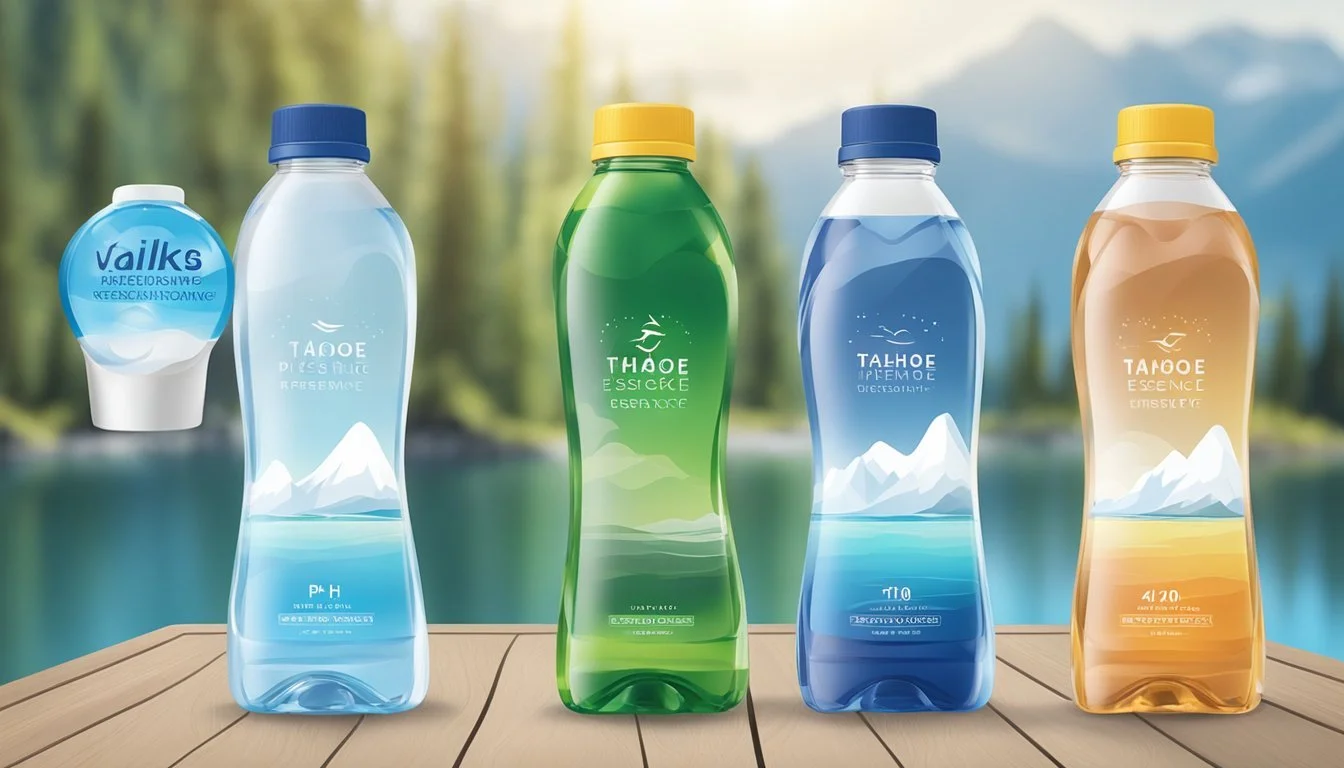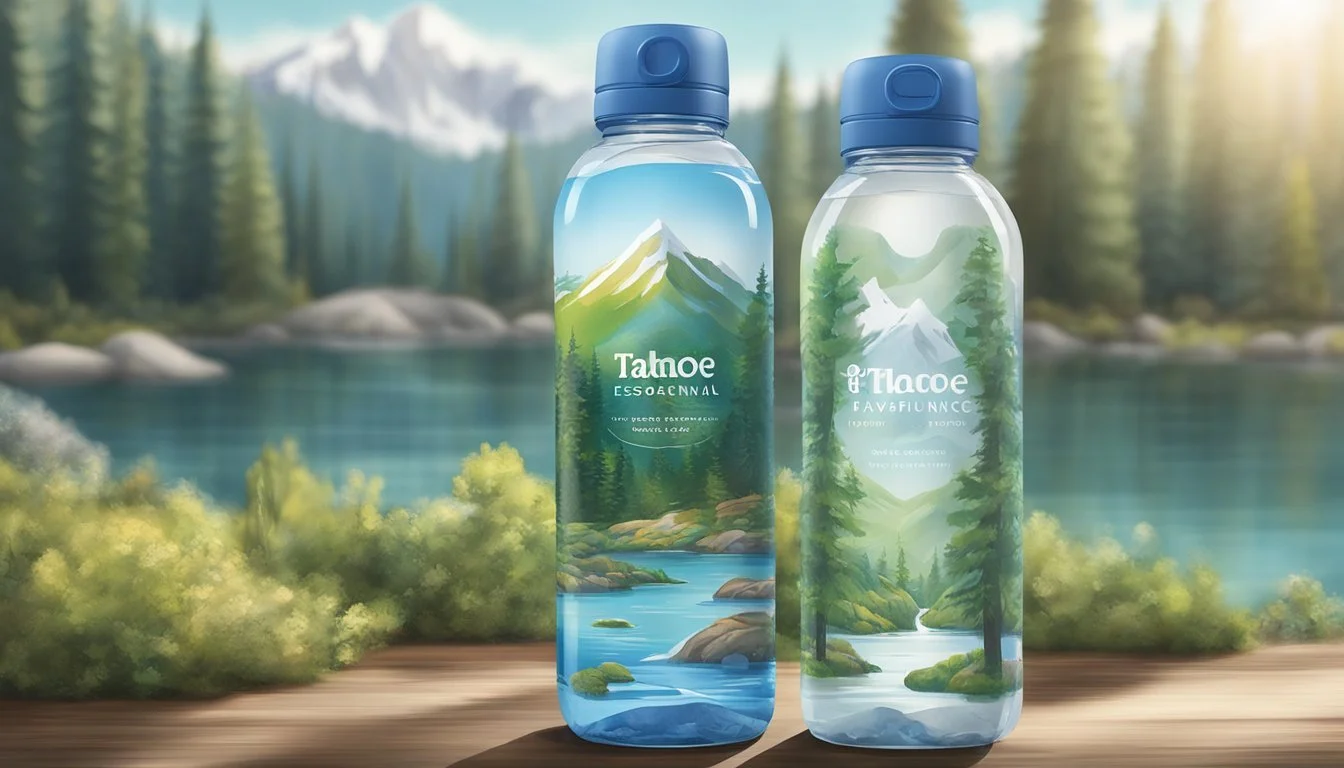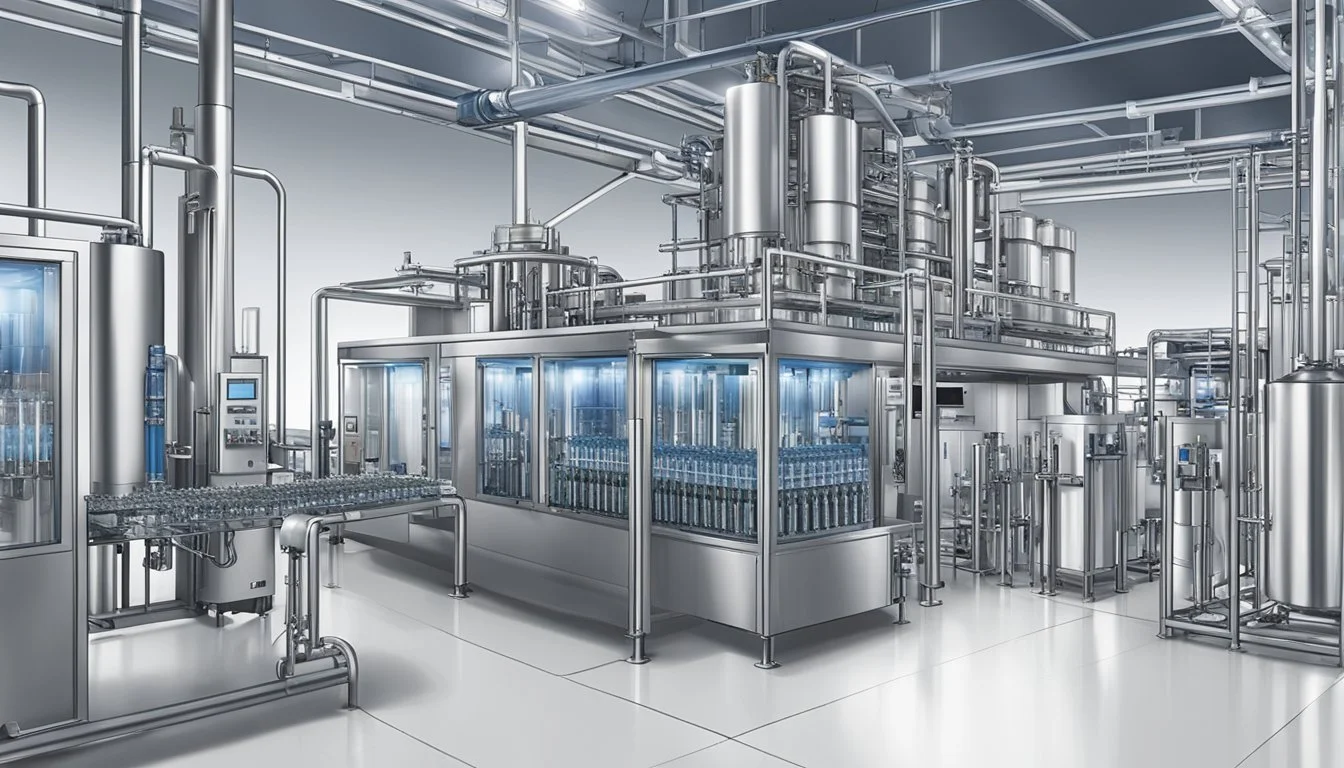Tahoe vs. Essence pH10
Comparing Bottled Water Quality and Taste
When choosing bottled water, the debate often narrows down to a few key players. Among them, Tahoe and Essence pH10 frequently come up in discussions about premium hydration options. Tahoe, with its pristine source and rigorous purification process, offers a clean, refreshing taste that appeals to many consumers looking for a reliable way to stay hydrated.
Essence pH10 stands out as a high-alkaline option, praised for its advanced ionization and filtration techniques. This water is particularly favored by those who seek the health benefits associated with alkaline hydration, boasting a pH level that supports the body's natural balance. In contrast, Tahoe focuses on purity and mineral content, making it a strong contender in the quality bottled water market.
Both brands cater to different preferences and needs. By comparing these two bottled waters, you can determine which one aligns better with your hydration goals and taste requirements. Whether you prioritize the natural purity of Tahoe or the functional benefits of Essence pH10, each offers unique advantages worth considering.
Evaluating Water Quality
Examining the water quality of Tahoe and Essence pH10 reveals differences in pH levels, mineral content, and purification processes.
The Significance of pH Levels
Tahoe water typically has a neutral to slightly alkaline pH, around 7.5 to 8.5. Essence pH10, on the other hand, is classified as an alkaline water with a pH level of 10. The higher pH of Essence pH10 can neutralize acid in the body, potentially providing benefits such as improved hydration and reduced acid reflux. pH levels can directly influence the taste, with higher pH levels offering a smoother mouthfeel and less acidic flavor.
Mineral Content and Health Benefits
Tahoe water's mineral content includes calcium, magnesium, and potassium, contributing to better bone health, muscle function, and overall hydration. Essence pH10 also contains these minerals but at higher concentrations due to its alkaline nature, enhancing its health benefits. The presence of these minerals aids in maintaining electrolyte balance, supporting bodily functions, and promoting overall well-being. Consumers often seek bottled water with varied mineral profiles for these added benefits.
Purity and Filtration Processes
Tahoe water undergoes a rigorous filtration process, often involving reverse osmosis and activated carbon filtering, ensuring high purity by removing contaminants and harmful microorganisms. Essence pH10 boasts an extensive purification process including distillation and additional filtration layers, aimed at achieving a high level of water purity. These processes eliminate impurities while retaining or enhancing beneficial minerals, resulting in cleaner, safer drinking water.
In-depth external testing of both brands has shown that they meet stringent water quality standards, providing consumers with confidence in their safety and purity. The careful purification methods not only enhance taste but also ensure that the water remains free from pollutants and toxins.
Types of Bottled Water
The types of bottled water vary greatly, each offering unique properties and benefits. This section will explore the distinctions between purified and spring waters, and the attributes of alkaline water.
Understanding Purified and Spring Waters
Purified water refers to water that has undergone various purification processes such as distillation, deionization, or reverse osmosis to remove impurities and contaminants. This type of water often tastes cleaner and is free of chemicals and toxins, making it a popular choice for those concerned with water quality.
Spring water, on the other hand, is collected from natural springs where water flows to the surface from an underground source. Natural spring water is typically filtered through layers of rock and soil, lending it a unique mineral composition. It often retains natural minerals that can enhance taste and provide health benefits. This type of water is often marketed for its natural origin and purity.
Alkaline Water and Its Properties
Alkaline water is characterized by a higher pH level than regular drinking water, typically above 7. This elevated pH level can be achieved naturally, through the presence of dissolved minerals, or artificially through ionization processes. Bottled alkaline water is often promoted for its potential health benefits, including improved hydration and neutralizing acids in the body.
Some consumers prefer alkaline water for its smoother taste and believe it offers benefits such as enhancing athletic performance and aiding in digestion. This type of water is becoming increasingly popular in the bottled water market.
By understanding these types of bottled water, consumers can make informed choices that best suit their hydration needs and preferences.
Comparison of Popular Brands
When choosing between Tahoe and Essence pH10, it's essential to compare them with other popular bottled water brands to understand their relative strengths and weaknesses. This section will explore how these brands measure up against some well-known competitors.
Essentia vs. Competitors
Essentia, known for its high alkaline water with a pH of 9.5, uses a proprietary ionization process. Fiji and Evian are comparable brands in the premium bottled water market.
Fiji boasts a natural artesian source with a pH of 7.7, sourced directly from the islands of Fiji.
Evian provides mineral-rich spring water with a neutral pH of 7, sourced from the French Alps.
Aquafina and Dasani, both owned by major beverage corporations, offer more accessible options but have slightly acidic pH levels around 5.5 to 7.0, due to their purification processes.
Smartwater is vapor-distilled with added electrolytes, making it popular among fitness enthusiasts.
Voss, on the other hand, markets its product as pure artisan water from Norway with a pH of around 6.0-7.0.
Tahoe and Market Alternatives
Tahoe, sourced from the naturally pristine waters of Lake Tahoe, offers a balanced pH, making it suitable for daily consumption. Compared to high-alkaline brands like Essentia pH1010, Tahoe provides a more neutral alternative.
Other market alternatives include:
Crystal Geyser, which offers spring water with a variety of pH levels.
LIFEWTR, an artfully branded purified water with electrolytes added for taste.
Waiakea, which provides volcanic water from Hawaii with an alkaline pH of around 8.8.
Icelandic Glacial offers water with a pH of 8.4, sourced from Icelandic springs, known for its purity and mineral content. Poland Spring and Nestlé Pure Life are other notable brands that provide reliable spring and purified water options, respectively. Acqua Panna delivers water from Tuscany with a naturally alkaline pH.
Both Tahoe and Essence pH10 showcase their unique qualities, standing out among various competitors due to their distinct sources and pH levels.
Taste and Consumer Preferences
The taste and consumer preferences for bottled water often depend on several factors such as mineral content, purification processes, and individual taste perceptions. This section examines how these elements shape the preferences for Tahoe and Essence pH10.
The Role of Minerals in Taste
Minerals play a crucial role in determining the taste of bottled water. Tahoe and Essence pH10 differ notably in their mineral composition. Tahoe sources its water from natural springs, which typically imbue the water with a range of minerals that contribute to a clean, refreshing taste.
Essence pH10, on the other hand, is known for its high-alkaline properties, which result from advanced ionization and filtration processes. This level of purification and alkalinity can lead to a distinctly pure taste, often free from the natural mineral flavors that characterize spring water.
Consumers who prefer a crisp, mineral-rich flavor may lean toward Tahoe, while those who favor a pure, smooth taste might choose Essence pH10.
Taste Test Comparisons
Taste tests often reveal consumer preferences between different bottled water brands. When comparing Tahoe and Essence pH10, taste tests commonly highlight unique differences.
Tahoe's spring water typically receives praise for its refreshing and slightly mineralized taste, which many tasters find appealing and natural. This taste profile caters to consumers who enjoy a hint of natural minerals in their water.
Essence pH10 offers a different experience. It’s praised for its smooth, clean profile with no noticeable aftertaste. This appeals to those who prefer highly purified water without any mineral overtones.
Taste tests thus underscore the divergent preferences, showing that consumer fondness is often split based on the mineral content and purity levels of the water.
Health and Hydration
Choosing the right bottled water can significantly impact hydration, health, and overall well-being. Both Tahoe and Essence pH10 offer distinct benefits that cater to specific hydration and health needs.
Benefits of Adequate Hydration
Adequate hydration is crucial for maintaining various bodily functions. Drinking sufficient water helps regulate body temperature, transport nutrients, and eliminate waste. Both Tahoe and Essence pH10 provide high-quality water options to keep the body well-hydrated.
Hydration is also essential for skin health. Well-hydrated skin appears more supple and less prone to dryness and wrinkling. People who maintain good hydration levels experience better joint and muscle function, reducing the risk of cramps and strains.
For those active in physical fitness, proper hydration is key to optimal performance. It helps to maintain blood volume, allowing effective oxygen delivery to muscles. Tahoe and Essence pH10, with their clean and crisp taste, may encourage increased water consumption, supporting overall health.
Electrolytes and Bodily Functions
Electrolytes such as potassium, calcium, and magnesium are vital for bodily functions. These minerals help in muscle contractions, nerve signaling, and maintaining pH balance.
Essence pH10 highlights its higher pH level, which may aid in reducing acidity in the body. This can be beneficial for those experiencing acid reflux or looking to neutralize body pH levels.
Tahoe, though not explicitly detailed for its electrolyte content, still offers balanced hydration that can support electrolyte replenishment. Drinking water from either brand ensures that the body's electrolyte needs are met, sustaining overall bodily functions.
Proper hydration and balanced electrolytes also prevent dehydration, which can lead to headaches, dizziness, and fatigue, ensuring the body's systems operate smoothly.
Packaging and Environmental Concerns
Tahoe and Essence pH10 bottled waters impact the environment and consumer health through their packaging choices and safety standards.
Sustainability and Bottles
Essence pH10 and Tahoe both recognize the significance of sustainable practices in packaging. Essence pH10 frequently utilizes BPA-free plastic bottles, aiming to reduce harmful environmental effects. These bottles, while a step forward, still contribute to plastic pollution if not recycled properly.
On the other hand, Tahoe adopts a similar approach but emphasizes the use of recycled plastic for its bottles. This reduces the overall carbon footprint associated with bottle production. Moreover, Essence pH10's initiatives support water source conservation, showing an additional commitment to environmental sustainability beyond packaging.
Safety and Contaminants
Both brands prioritize consumer safety by adhering to standards set by the Environmental Protection Agency. Essence pH10 ensures its water is free from contaminants like lead and other harmful substances, which is a key selling point for health-conscious consumers.
Tahoe also follows stringent purification processes to maintain high safety standards. The use of BPA-free bottles by both brands addresses concerns about harmful chemicals leaching into the water. This focus on safety guarantees that both Essence pH10 and Tahoe deliver reliable and healthy hydration options.
Technological Advancements in Water Bottling
Modern bottling practices have significantly evolved, integrating advanced filtration and purification technologies alongside sophisticated analysis tools. These developments ensure higher water quality standards and user-friendly experience.
Innovations in Filtration and Purification
Current filtration and purification processes are extensive and precise. Reverse osmosis (RO) is now a cornerstone, removing contaminants at a molecular level. Additionally, micro-filtration targets specific harmful particles, enhancing safety and taste. These methods ensure that bottled water is free from heavy metals, bacteria, and other impurities.
Producers also employ ultraviolet (UV) light sterilization to eliminate any remaining microorganisms. This, combined with ozone treatment, provides a comprehensive purification framework. Such innovations enable brands like Tahoe and Essence pH10 to maintain high purity levels, meeting stringent regulatory standards.
Emerging Water Analysis Tools
Accurate water analysis has become crucial for premium bottled water brands. Electronic pH meters offer precise pH measurements, ensuring that water falls within desired ranges. These meters provide real-time data, supporting consistent product quality.
pH indicator paper, while simpler, remains widely used for quick checks during various production stages. Advanced gas chromatography-mass spectrometry (GC-MS) identifies trace contaminants, offering detailed insights into water composition. Automated systems further streamline testing, reducing human error and enhancing reliability.
These tools, utilized by Tahoe and Essence pH10, guarantee that each bottle meets consumer expectations for quality and safety. Enhanced monitoring capabilities solidify consumer trust in bottled water products.
Water Source and Origin
When selecting bottled water, the source and origin play a critical role in determining its purity and quality. Tahoe and Essence pH10 offer distinct backgrounds that shape their characteristics.
Traceability of Water Sources
Tahoe sources its water from pristine American springs, ensuring a transparent supply chain. Each bottle is clearly labeled with the precise spring and location, providing consumers with confidence in its origin.
Essence pH10, on the other hand, is known for its highly purified water from various underground sources. The company invests heavily in advanced filtration and purification processes to achieve a high level of purity and a unique pH balance. Both brands prioritize the traceability of their water sources, but their methods and origins differ substantially.
Exotic and Premium Water Sources
Tahoe's water originates from natural springs in the U.S., prized for their high mineral content and natural filtration through underground rock formations. This lends Tahoe water a distinct taste and mineral profile that many consumers find appealing.
Essence pH10 sources its water from select underground locations, where it undergoes rigorous purification. While not sourced from exotic locations, its high pH level and purity are its main selling points. Essence's purification process ensures that it maintains a consistent quality, making it a premium choice available in many grocery stores.
More About Tahoe
Mountain Valley Spring Water vs Tahoe: Which Bottled Water is Better?
Tahoe vs Richard's Rainwater: Which Bottled Water is Better?
Tahoe vs Whole Foods Italian Still Mineral water: Which Bottled Water is Better?
More About Essence pH10
Aqua Carpatica vs Essence pH10: Which Bottled Water is Better?
Cascade Mountain vs Essence pH10: Which Bottled Water is Better?
Core Hydration vs Essence pH10: Which Bottled Water is Better?
Crystal Geyser vs Essence pH10: Which Bottled Water is Better?
Crystal Lake vs Essence pH10: Which Bottled Water is Better?
Hawaii Volcanic vs Essence pH10: Which Bottled Water is Better?
Hawaiian Springs vs Essence pH10: Which Bottled Water is Better?
Ice Mountain vs Essence pH10: Which Bottled Water is Better?
Icelandic Glacial vs Essence pH10: Which Bottled Water is Better?
Kirkland Signature vs Essence pH10: Which Bottled Water is Better?
Liquid Death vs Essence pH10: Which Bottled Water is Better?
Mountain Valley Spring Water vs Essence pH10: Which Bottled Water is Better?
Nestle Pure Life vs Essence pH10: Which Bottled Water is Better?
Poland Spring vs Essence pH10: Which Bottled Water is Better?
Proud Source vs Essence pH10: Which Bottled Water is Better?
Purely Sedona vs Essence pH10: Which Bottled Water is Better?
Richard's Rainwater vs Essence pH10: Which Bottled Water is Better?
San Pellegrino vs Essence pH10: Which Bottled Water is Better?
Simple Truth vs Essence pH10: Which Bottled Water is Better?
Solan de Cabras vs Essence pH10: Which Bottled Water is Better?
Talking Rain AQA vs Essence pH10: Which Bottled Water is Better?
Whole Foods 365 vs Essence pH10: Which Bottled Water is Better?
Whole Foods Italian Still Mineral water vs Essence pH10: Which Bottled Water is Better?






